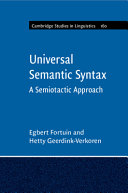Buy Investments: An Introduction, 13th Edition PDF ebook by author Herbert B. Mayo – published by Cengage Learning in 2021 and save up to 80% compared to the print version of this textbook. With PDF version of this textbook, not only save you money, you can also highlight, add text, underline add post-it notes, bookmarks to pages, instantly search for the major terms or chapter titles, etc.
You can search our site for other versions of the Investments: An Introduction, 13th Edition PDF ebook. You can also search for others PDF ebooks from publisher Cengage Learning, as well as from your favorite authors. We have thousands of online textbooks and course materials (mostly in PDF) that you can download immediately after purchase.
Note: e-textBooks do not come with access codes, CDs/DVDs, workbooks, and other supplemental items.
eBook Details:
Full title: Investments: An Introduction, 13th Edition
Edition: 13th
Copyright year: 2021
Publisher: Cengage Learning
Author: Herbert B. Mayo
ISBN: 9780357128367, 9780357390535
Format: PDF
Description of Investments: An Introduction, 13th Edition:
Gain a full understanding of today’s most important investment topics from the perspective of an individual financial planner with Mayo’s INVESTMENTS: AN INTRODUCTION, 13E. This inviting approach introduces the process of investing and the many alternatives available for constructing a strong investment portfolio. You master the investing fundamentals needed for success on the CFP exam while developing more advanced investing skills. Learn to manage your assets as an active portfolio manager or simply as an informed investor. This edition highlights how to make solid investment decisions with an overview of today’s most pertinent investment opportunities and challenges. Updates highlight the latest changes in taxation and investment planning prompted by the 2018 Tax Cuts and Jobs Act (TCJA). An ongoing Financial Advisor’s Investment Case and expanded coverage of stock valuation ratios, stock repurchases, and dividend payments emphasize how to apply what you’ve learned to daily decisions.Important Notice: Media content referenced within the product description or the product text may not be available in the ebook version.
Table of Contents of Investments: An Introduction, 13th Edition PDF ebook:
DedicationBrief ContentsContentsPrefacePart 1: The Investment Process and Financial ConceptsChapter 1: An Introduction to InvestmentsPortfolio Construction and PlanningPreliminary DefinitionsDiversification and Asset AllocationEfficient and Competitive MarketsPortfolio Assessment”Trading” versus “Investing”AssumptionsProfessional Designations and CertificationsThe InternetThe Plan and Purpose of This TextSummaryChapter 2: Securities MarketsSecondary Markets and the Role of Market MakersThe Mechanics of Investing in SecuritiesThe Short SaleForeign SecuritiesRegulationSecurities Investor Protection CorporationInitial Public OfferingsSummaryQuestionsRelationships and Illustrated Fundamental ProblemsProblemsChapter 3: The Time Value of MoneyThe Future Value of $1The Present Value of $1The Future Sum of an AnnuityThe Present Value of an AnnuityIllustrations of Compounding and DiscountingEquations for the Interest FactorsNonannual CompoundingUneven Cash FlowsSummaryQuestionsRelationships and Illustrated Fundamental ProblemsProblemsAppendix 3: Using Excel to Solve Time Value ProblemsChapter 4: Financial Planning, Taxation, and the Efficiency of Financial MarketsThe Process of Financial PlanningAsset AllocationTaxationPension PlansThe Efficient Market HypothesisSummaryQuestionsRelationshipsProblemsAppendix 4: The Deductible versus the Nondeductible IRAChapter 5: Risk and Portfolio ManagementReturnSources of RiskTotal (Portfolio) RiskThe Measurement of RiskRisk Reduction through Diversification: An IllustrationPortfolio TheoryThe Capital Asset Pricing ModelBeta CoefficientsArbitrage Pricing TheorySummaryQuestionsRelationships and Illustrated Fundamental ProblemsProblemsInvestment Assignment (Part 2)Appendix 5: Statistical ToolsPart 2: Investment CompaniesChapter 6: Investment Companies: Mutual FundsInvestment Companies: Origins and TerminologyMutual FundsThe Portfolios of Mutual FundsMoney Market Mutual FundsSelecting Mutual FundsTaxationRedeeming Mutual Fund SharesMeasures of Risk-Adjusted PerformanceSummaryQuestionsRelationships and Illustrated Fundamental ProblemsProblemsChapter 7: Closed-End Investment Companies, Real Estate Investment Trusts (REITs), and Exchange-TradClosed-End Investment CompaniesReal Estate Investment Trusts (REITs)Exchange-Traded Funds (ETFs)Hedge Funds and Private Equity FirmsInvestment Companies and Foreign InvestmentsSummaryQuestionsRelationships and Illustrated Fundamental ProblemsProblemsPart 3: Investing in Common StockChapter 8: StockThe Corporate Form of Business and the Rights of Common StockholdersCash DividendsStock DividendsThe Stock SplitStock Repurchases and LiquidationsPreferred StockAnalysis of Financial StatementsLiquidity RatiosActivity RatiosProfitability RatiosLeverage (Capitalization) RatiosCoverage RatiosAnalysis of Financial Statements, Securities Selection, and the InternetAnalysis of Cash FlowSummaryQuestionsRelationships and Illustrated Fundamental ProblemsProblemsInvestment Assignment (Part 3)Chapter 9: The Valuation of Common StockThe Logical Process of Securities ValuationThe Investor’s Expected ReturnStock Valuation: The Present Value of DividendsRisk-Adjusted Required Return and Stock ValuationStock Valuation: Discounted Earnings or Cash FlowStock Valuation: Analysis of Financial Statements and Price MultiplesValuation and the Efficient Market HypothesisSummaryQuestionsRelationships and Illustrated Fundamental ProblemsProblemsInvestment Assignment (Part 4)Appendix 9: Testing the Efficient Market Hypothesis: The Event StudyChapter 10: Investment Returns and Aggregate Measures of Stock MarketsMeasures of Stock Performance: Averages and IndexesThe Dow Jones Industrial AverageOther Indexes of Aggregate Stock PricesRates of Return on Investments in Common StockStudies of Investment ReturnsReducing the Impact of Price Fluctuations: AveragingSummaryQuestionsRelationships and Illustrated Fundamental ProblemsProblemsChapter 11: The Macroeconomic Environment for Investment DecisionsThe Economic EnvironmentMeasures of Economic ActivityThe Consumer Price IndexThe FEDFiscal PolicyThe 2008-2012 Economic EnvironmentSummaryQuestionsRelationshipsChapter 12: Behavioral Finance and Technical AnalysisBehavioral FinanceTechnical AnalysisMarket IndicatorsSpecific Stock IndicatorsTechnical Analysis in an Efficient Market ContextThe Dogs of the DowSummaryQuestionsRelationshipsInvestment Assignment (Part 5)Part 4: Investing in Fixed-Income SecuritiesChapter 13: The Bond MarketGeneral Features of BondsRiskThe Mechanics of Purchasing BondsVariety of Corporate BondsHigh-Yield SecuritiesAccrued Interest, Zero Coupon Bonds, Original-Issue Discount Bonds, and Income TaxationRetiring DebtObtaining Information on BondsSummaryQuestionsRelationships ProblemsAppendix 13: The Term Structure of Interest RatesChapter 14: The Valuation of Fixed-Income SecuritiesPerpetual SecuritiesBonds with Maturity DatesFluctuations in Bond PricesThe Valuation of Preferred StockYieldsRisk and Fluctuations in YieldsRealized Returns and the Reinvestment AssumptionDurationBond Price Convexity and DurationManagement of Bond PortfoliosSummaryQuestionsProblemsAppendix 14A: Bond Discounts/Premiums and Duration ComparedAppendix 14B: Using the Structure of Yields to Price a BondChapter 15: Government SecuritiesThe Variety of Federal Government DebtSTRIPSInflation-Indexed Treasury SecuritiesFederal Agencies’ DebtState and Local Government DebtAuthority BondsForeign Government Debt SecuritiesGovernment Securities and Investment CompaniesSummaryQuestionsRelationshipsProblemsAppendix 15: Using Yield CurvesChapter 16: Convertible Bonds and Convertible Preferred StockFeatures of Convertible BondsThe Valuation of Convertible BondsPremiums Paid for Convertible DebtConvertible Preferred StockSelecting ConvertiblesThe History of Selected Convertible BondsCalling ConvertiblesContingent Convertible BondsPut BondsBonds with Put and Call Features ComparedInvestment Companies and Convertible SecuritiesSummaryQuestionsRelationships and Illustrated Fundamental ProblemsProblemsPart 5: DerivativesChapter 17: An Introduction to OptionsCall OptionsLeverageWriting CallsPutsLEAPSPrice Performance of Puts and CallsThe Chicago Board Options ExchangeStock Index OptionsCurrency and Interest Rate OptionsWarrantsSummaryQuestionsRelationshipsProblemsInvestment Assignment (Part 6)Chapter 18: Option Valuation and StrategiesBlack-Scholes Option ValuationExpensing Employee Stock Options and Option ValuationPut-Call ParityThe Hedge RatioAdditional Option StrategiesBuying the Call and a Treasury Bill versus Buying the Stock-An Alternative to the Protective PutSummaryQuestionsProblemsAppendix 18: Binomial Option PricingChapter 19: Commodity and Financial FuturesInvesting in Commodity FuturesLeverageHedgingThe Selection of Commodity Futures ContractsThe Pricing of FuturesFinancial Futures and Currency FuturesFutures for Debt InstrumentsCurrency FuturesSwapsSummaryQuestionsRelationships and Illustrated Fundamental ProblemsProblemsPart 6: An OverviewChapter 20: Financial Planning and Investing in an Efficient Market ContextPortfolio Planning, Construction, and Risk ManagementChoice and Its Impact on Security Selection and RiskThe Importance of Market EfficiencyAppendix A: Mathematical TablesAppendix B: Answers to Selected ProblemsGlossaryIndex





